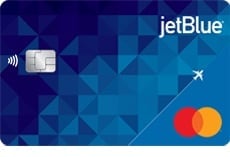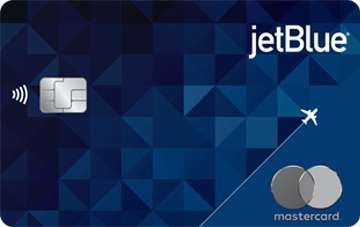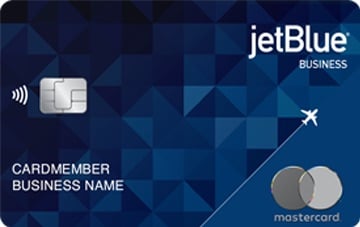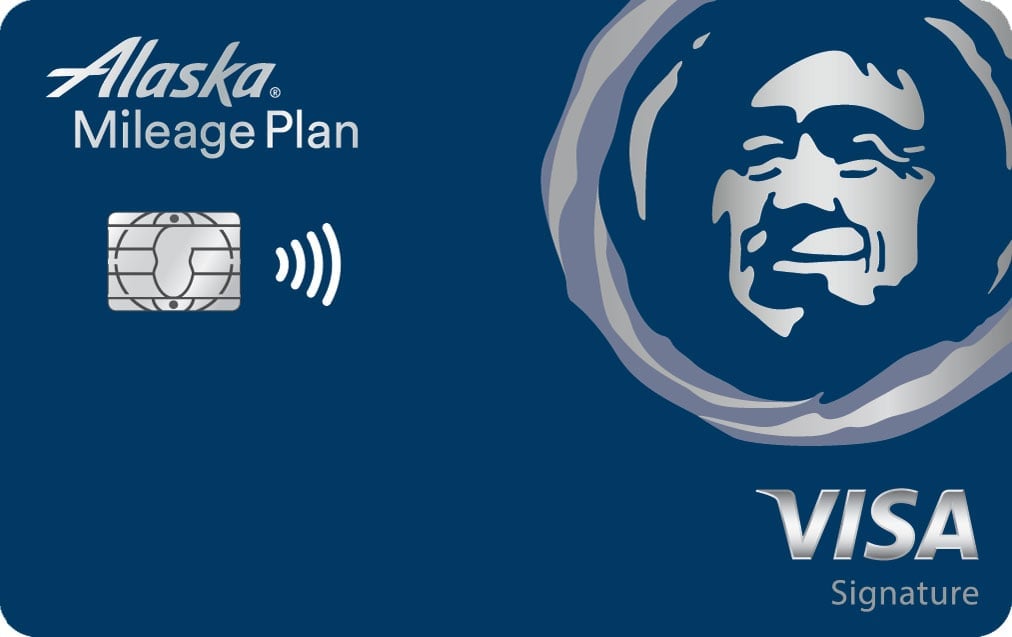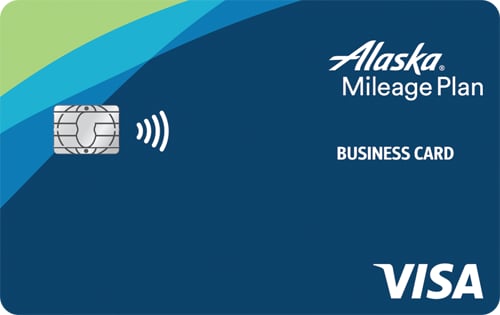Alaska Airlines vs. JetBlue Airways: Which Is Better?
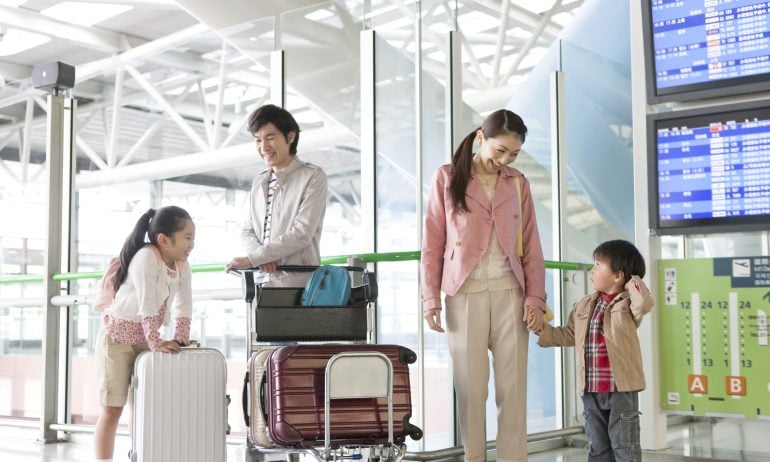
Many or all of the products featured here are from our partners who compensate us. This influences which products we write about and where and how the product appears on a page. However, this does not influence our evaluations. Our opinions are our own. Here is a list of our partners and here's how we make money.
Most travelers know what to expect from the largest U.S. airlines: American, Delta, United and Southwest. But you may not be as familiar with two of the country's smaller airlines: Alaska Airlines and JetBlue Airways.
So in the battle of Alaska vs. JetBlue, who comes out on top? We’ll take a look at route maps, credit card availability, loyalty programs, fees and in-flight experience to see which airline you should check out the next time you’re searching for a flight.
Routes/destinations
Winner: Alaska for domestic, JetBlue for international
Alaska serves more total destinations than JetBlue. However, it would be unfair to give Alaska the full win here considering that JetBlue serves more than double the number of international destinations.
So, let's call this one a draw, with Alaska winning for domestic flights and JetBlue taking the prize for international flights.
Alaska
Alaska promotes itself as the “premier West Coast airline,” and indeed its route network is focused on the U.S. West Coast. As of February 2024, Alaska serves 107 domestic destinations and 18 international destinations across seven countries. Alaska hubs and focus cities include the following:
Anchorage, Alaska.
Los Angeles.
Portland, Oregon.
Seattle.
San Francisco.
Alaska's pending merger with Hawaiian Airlines would add Hawaiian’s 31 destinations across the U.S. and seven other countries.
JetBlue
In many ways, JetBlue's East Coast-based route network is the yang to Alaska’s yin. JetBlue serves just 67 domestic destinations but a whopping 47 international destinations across 33 countries in the Caribbean, Central America, northern South America and now expanding across the Atlantic to Europe. JetBlue's hub cities include:
Boston.
Fort Lauderdale, Florida.
Los Angeles.
New York.
Orlando, Florida.
San Juan, Puerto Rico.
» Learn more: Should I be loyal to a single airline?
Reliability
Winner: Alaska
Alaska is the clear winner when it comes to which airline you can count on to get you where you need to go. In NerdWallet's most recent analysis, Alaska took top prize as the most reliable airline of 2023. On the flip side, JetBlue ranked second to last due to abysmal on-time and cancellation rates.
Alaska
From January 2023 through August 2023, Alaska operated nearly 4 of 5 flights on time, ranking it second just behind Delta Air Lines. Alaska canceled just 0.86% of its scheduled flights — the second-lowest rate of any U.S. airline during that period.
Add in a low rate of denied boardings and tarmac delays and Alaska did well enough to take the prize as NerdWallet's most reliable airline of 2023.
With that said, Alaska recently struggled in a couple of operational areas. From January 2023 through August 2023, Alaska had the third-highest flight diversion rate and the third-highest baggage mishandled rate.
JetBlue
Over the period NerdWallet analyzed, JetBlue was one of the least reliable airlines in 2023. More than one-third of JetBlue flights were delayed by more than 15 minutes, ranking JetBlue second-worst of any U.S. airline. Even worse, JetBlue canceled 1 in 39 flights (2.59%). Again, that landed it in second-to-last place.
Even once a JetBlue flight departed, it wasn't sure to get to its scheduled destination. JetBlue had the highest flight diversion rate, with an average of 1 in every 218 scheduled flights being diverted from its destination. Putting all of these metrics together, only Frontier was a less reliable airline in 2023.
Fees
Winner: Alaska
When it comes to the airline charging the lowest fees, Alaska beats JetBlue. Alaska allows a full-size carry-on for all passengers, while JetBlue does not. Plus, JetBlue charges more for pet travel and up to triple the cost for unaccompanied minor travel.
But overall, both airlines rank near the top of the list when compared with other U.S. airlines.
Alaska
On all Alaska tickets, each passenger is permitted one carry-on bag and one personal item. Economy passengers have to pay $35 for their first standard-size, standard-weight checked bag and $45 for their second.
Get a free checked bag on Alaska by purchasing your flight with an Alaska Airlines Visa Signature® credit card or Alaska Airlines Visa® Business card. Alaska Mileage Plan and Oneworld alliance elite members get two free checked bags.
» Learn more: Compare Alaska's credit cards
Alaska charges $100 to travel with a pet in the cabin. Tickets for unaccompanied minors cost an additional $50 each way on a direct flight and $75 on a connecting flight.
JetBlue
For flights within North America, JetBlue also charges $35 for a passenger's first checked bag and $50 for a second checked bag. However, you’ll have to pay $10 more for checked bags added within 24 hours of departure.
You can avoid at least a first checked bag fee by purchasing your flight with a JetBlue Plus Card, buying a Blue Plus ticket or holding Mosaic elite status.
However, where JetBlue falls behind Alaska is by not allowing Blue Basic passengers a full-size carry-on. Passengers traveling on Blue Basic fares can bring only a small personal item. All other passengers get a personal item and a full-size carry-on bag.
JetBlue charges $125 to fly with a pet in the cabin, and unaccompanied minors cost $150 each way.
» Learn more: See JetBlue's available credit cards
Basic economy
Winner: Tied
In a NerdWallet analysis, Alaska Airlines Saver fares and JetBlue's Blue Basic are virtually tied for being the most punitive. Alaska charges a higher markup to avoid basic economy and has a harsher cancellation policy.
Meanwhile, JetBlue is dinged for not letting Blue Basic passengers bring a full-size carry-on bag on board.
Alaska
Alaska refers to its basic economy fares as "Saver fares." However, what you might save in cost, you'll give up in flexibility and mileage earnings.
Saver fares now earn just 30% of flight miles vs. (at least) 100% for main cabin fares. And if your plans change, you can only get a travel credit for 50% of the price if you cancel at least 14 days before departure. Within 14 days of departure, Saver fares are fully nonrefundable.
If you want to avoid Alaska basic economy, it's going to cost you. A NerdWallet analysis found that Alaska charges an average round-trip price difference of $73 to upgrade from basic economy to main cabin. That's the highest of the five major U.S. airlines analyzed.
JetBlue
JetBlue's basic economy fares are called Blue Basic. And indeed, they are basic. JetBlue Blue Basic passengers can't even bring a full-size carry-on on board when traveling within North America. Instead, they're limited to just a small personal item, such as a backpack.
Additional fees apply for seat selection, and there's a $100 fee if you need to change or cancel your flight — or a $200 fee when flying on JetBlue's European routes.
JetBlue Blue Basic fares earn just one-third of the standard mileage earnings. Blue Basic fares earn a base of just 1 TrueBlue point per dollar spent vs. 3x points for all other fares.
Airline loyalty programs
Winner: Alaska
Alaska
You can earn Mileage Plan Miles by flying on Alaska or Oneworld alliance member airlines, booking hotel stays and shopping through the airline’s shopping portal.
Based on NerdWallet’s valuations, Alaska miles are worth 1.4 cents when redeemed for flights. That valuation puts Alaska in the middle of the pack when it comes to airline mileage valuations. However, NerdWallet routinely rates the Alaska Mileage Plan program as the best in the business.
Alaska has the best rewards earning rates of any U.S. airline. That means you get more value back in the form of miles per dollar spent than with other programs. Alaska Mileage Plan is also NerdWallet's winner for the best elite status program.
» Learn more: Your complete guide to Alaska Airlines Mileage Plan
JetBlue
Earn TrueBlue points by flying JetBlue, booking vacation packages through JetBlue Vacations or by spending with a variety of travel or retail partners. You can even earn points by flying with JetBlue’s partner airlines, which include Hawaiian, Qatar Airways, Singapore Airlines and JSX.
Based on NerdWallet’s valuations, JetBlue TrueBlue points are worth 1.5 cents when redeemed for flights. Since JetBlue uses a revenue-based redemption program, you can use your points for any seat on any JetBlue flight with available seats.
In addition to redeeming points for flights, you can redeem TrueBlue points for the flight portion of a JetBlue vacation or a flight and hotel package. And unlike with many U.S. frequent traveler programs, TrueBlue members can pool their points with family or friends to earn award tickets faster.
Business class
Winner: JetBlue
Of the two airlines, JetBlue definitely takes the prize for best business class. Travelers can fly in lie-flat seats on JetBlue Mint routes from coast to coast, to the Caribbean and even to Europe. Comparatively, Alaska first class seating doesn't come close to competing.
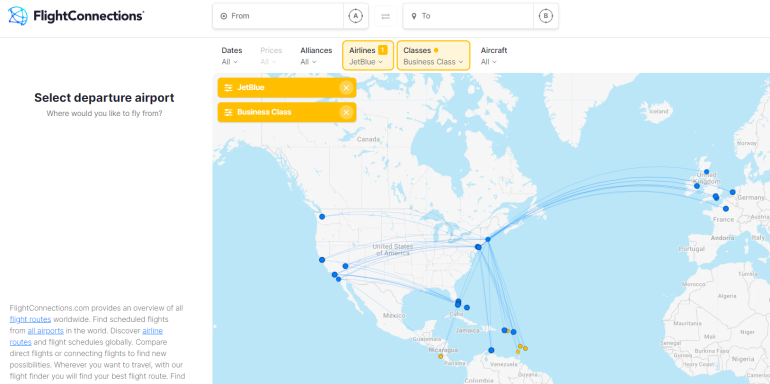
Alaska
Alaska does a solid job with its first class product. Alaska boasts "the most legroom in any U.S. domestic airline" with 41 inches of pitch in its first class seats — with the asterisk that this is only compared to "non-lie-flat" first class seats on other airlines.
One unique aspect of Alaska first class is that passengers on flights over 2,100 miles get free access to Alaska lounges. On shorter flights, passengers can purchase access for a discounted rate of $30.
JetBlue
Whether flying coast to coast or on JetBlue's European routes, JetBlue Mint is the way to fly. In addition to a 6-foot-8-inch lie-flat business class seat, JetBlue Mint offers tapas-style fresh dining options (even paired with a customized playlist), made-to-order cocktails, wellness kits and noise-isolating headphones.
Just make sure to choose your seat carefully on older Mint aircraft, as some JetBlue Mint seats have two seats per row. That means you might have to climb over a stranger — or have a stranger climb over you — to reach the aisle.
Travel credit card availability
Winner: JetBlue
JetBlue edges out Alaska for the top spot when it comes to credit cards, but it's a close battle. Alaska and JetBlue offer a sub-$100 annual fee personal card and business card. However, JetBlue's no-annual-fee card option and more comprehensive benefits give it the edge.
$0.
$99.
$99.
Earn 10,000 bonus points after spending $1,000 on purchases in the first 90 days.
Earn 60,000 bonus points after spending $1,000 on purchases and paying the annual fee in full, both within the first 90 days, with the JetBlue Plus Card.
Earn up to 60,000 bonus points! Earn 50,000 bonus points after spending $4,000 on purchases in the first 90 days. Plus, earn 10,000 bonus points when a purchase is made on an employee card in the first 90 days.
JetBlue offers three credit card options — two personal cards and a business card. The cards earn 3-6x points on JetBlue purchases, as well as 2x points on restaurants and grocery stores and 1x on everything else.
Both JetBlue cards with an annual fee earn 5,000 bonus points every year on your account anniversary, as well as waive the first checked bag fee for you and up to three companions when you use your card to pay for a JetBlue flight.
Alaska, meanwhile, offers two credit cards: one for personal use and one for business use. Both offer an easy way to earn miles and come with a variety of benefits.
$95.
$70 for the company and $25 per card.
Get 60,000 bonus miles plus Alaska's Famous Companion Fare™ ($99 fare plus taxes and fees from $23) with this offer. To qualify, make $3,000 or more in purchases within the first 90 days of opening your account.
Get 50,000 bonus miles, $100 statement credit and Alaska's Famous Companion Fare™ ($99 fare plus taxes and fees from $23) after you make $3,000 or more in purchases within the first 90 days of opening your account.
• 3 miles per $1 on eligible Alaska Airlines purchases.
• 2 miles per $1 on eligible gas, EV charging, cable, streaming services and local transit (including ride share) purchases.
• 1 mile per $1 on all other purchases.
• 3 miles per $1 on eligible Alaska Airlines purchases.
• 2 miles per $1 on eligible gas, EV charging, shipping and local transit (including ride share) purchases.
• 1 mile per $1 on all other purchases.
Both Alaska cards come with a free checked bag for you and up to six traveling companions on the same itinerary. You can also get $100 off an annual Alaska Lounge+ membership when you pay with your card.
» Learn more: The best airline credit cards right now
If you’re considering JetBlue vs. Alaska Airlines
The decision between JetBlue and Alaska is likely going to depend on where you're based and where you fly the most often.
JetBlue's route map focuses on the U.S. East Coast — with a few international flights to Europe. Especially when compared with JetBlue, Alaska is the undisputed West Coast airline — even before its planned merger with Hawaiian.
With that said, Alaska is the clear winner if both airlines offer flights on your route.
However, certain aspects can tilt the scales in favor of one airline or the other. JetBlue is the only airline of the two with a no-fee credit card and the only one that provides free Wi-Fi for all passengers.
Meanwhile, Alaska provides a free full-size carry-on to all passengers, while JetBlue doesn't allow passengers on Blue Basic fares to bring a full-size bag on board North American flights. So, weigh the factors that are most important to you when deciding which airline is the best choice for your trip.
How to maximize your rewards
You want a travel credit card that prioritizes what’s important to you. Here are our picks for the best travel credit cards of 2024, including those best for:
Flexibility, point transfers and a large bonus: Chase Sapphire Preferred® Card
No annual fee: Bank of America® Travel Rewards credit card
Flat-rate travel rewards: Capital One Venture Rewards Credit Card
Bonus travel rewards and high-end perks: Chase Sapphire Reserve®
Luxury perks: The Platinum Card® from American Express
Business travelers: Ink Business Preferred® Credit Card



